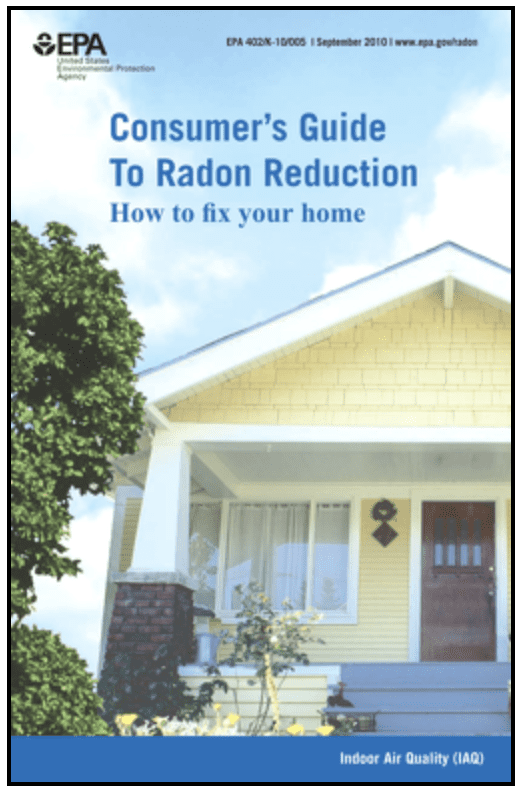Resource Library
EPA: Consumer’s Guide to Radon Reduction
Download
Overview
This guide for consumers explains how to reduce radon levels in a home.
Quick Links

Radon is an invisible, odorless, and tasteless gas, with no immediate health symptoms, that comes from the breakdown of uranium inside the earth. Simple test kits can reveal the amount of radon in any building. Those with high levels can be fixed with simple and affordable venting techniques. According to U.S. Environmental Protection Agency (EPA) estimates, one in every 15 homes nationwide has a high radon level at or above the recommended radon action level of 4 picoCuries (pCi/L) per liter of air.
This guide for consumers explains how to reduce radon levels in a home.
